Best Time to Visit Prague
Discover the strengths and weaknesses of each season and prepare for an amazing holiday.
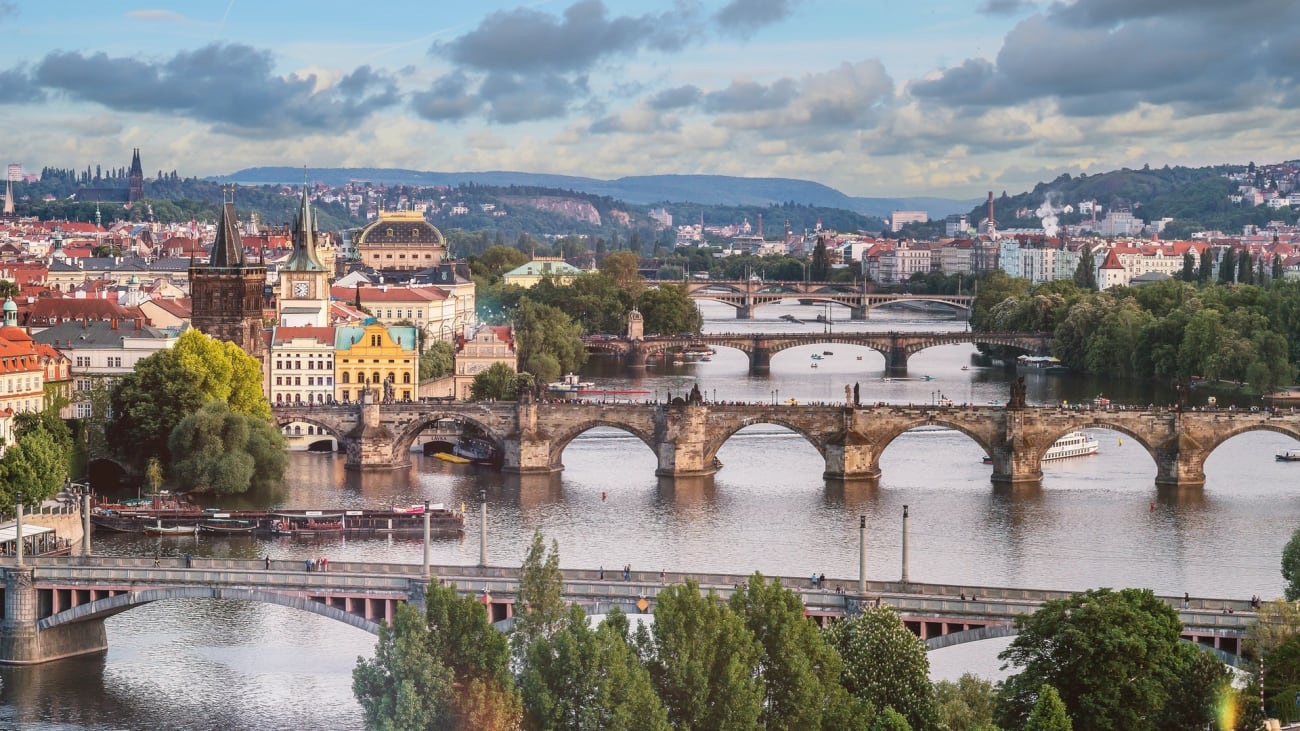
View of the bridge | ©Jeshoots
Prague is an enchanting city and is worth a visit at any time of the year. Its magnificent architecture has captivated thousands of tourists who often repeat their holidays in the Czech capital. If you have never been, now is the time to discover its charms...
When is the best time to visit Prague?
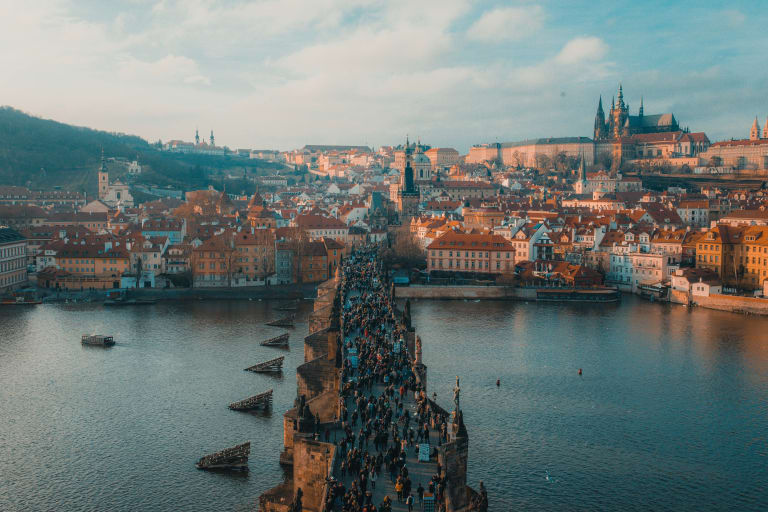
If you are planning to visit the capital of the Czech Republic, I recommend you to choose late spring or early autumn. You will enjoy more daylight hours and you will be able to visit the sights at a pleasant temperature. As for prices, September and October are the best months: you'll find fewer tourists and more affordable airfare and accommodation.
Visiting Prague in spring is a highly recommended option.
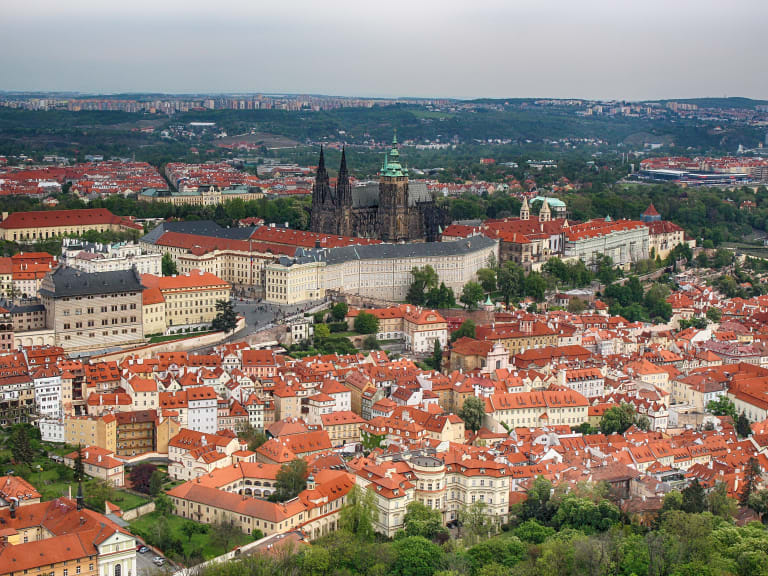
In spring, Prague comes back to life: cherry blossoms adorn the streets and the beer gardens welcome a large number of tourists and locals. If March does not escape the long grip of winter (it can sometimes snow), everything changes in the following two months. In April, westerly winds keep the skies clear and temperatures range from 5° to 15°. In May, the maximum temperature can reach 25°C, except for three days in the middle of the month (12th, 13th and 14th) which are known as the "frozen saints" (ledoví muži). As you can guess, temperatures are again close to 0°.
In Prague, the temperature range is quite wide. It is therefore useful to refresh the mantra of any trip: to avoid surprises , it is best to dress in layers. In the middle of the day you can wear a sweatshirt (and sometimes even just a T-shirt), but be prepared if you plan to go out in the evenings or early mornings.
What to do in Prague in spring?
This is the time of year when the city's main festivals (with the exception of Christmas) and internationally renowned events take place. Read on, we have compiled a short list of the most important ones:
- 1 May. All over the world, this date is synonymous with Workers' Day. However, the Czech Republic also celebrates love. The first day of May is the local Valentine's Day. Couples often go to Petřín Hill for a kiss near the statue of the poet Karel Hynek Mácha, the author of the poem "Máj" (May), which is considered a classic of Czech romanticism.
- 8 May, the day of the country's liberation from fascism. This day commemorates the victory of the Allies against the Axis forces in World War II. On this occasion, the president and the prime minister go to the National Monument on Vitkov Hill to lay wreaths and observe a minute's silence. If you're in town, you can watch a parade through the streets of the city centre, take part in an open-air concert and enjoy a fireworks display.
- The Rosé Wine Festival takes place in May. Producers present their wines in emblematic places such as the Prague Castle, the elegant Villa Richter or the St. Wenceslas vineyard. If you want to know more, I recommend you check the official website of the event.
- The Prague Marathon is a sporting event held every May. The race starts and finishes in the Old Town Square (Staroměstské náměstí) and has a total length of 26 miles.
- Fringe Festival, an event that has been animating the Malá Strana quarter since 2002. It is a mix of theatre, comedy, music, dance and storytelling that takes place in May. As you can see, this is the liveliest month in the Czech capital.
The arrival of spring coincides with the opening of gardens and castles.
Autumn: the season that gives the Czech capital a magical touch
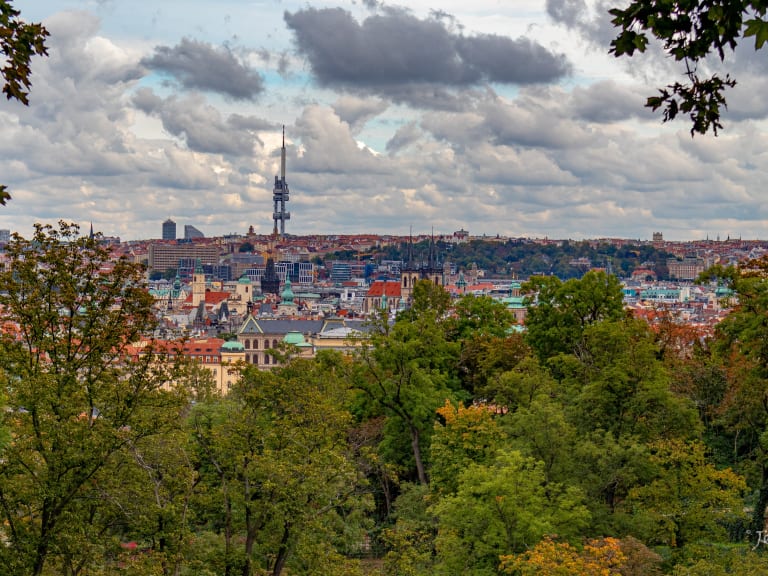
In autumn, temperatures are usually pleasant, especially in September, which benefits from the last rays of summer sunshine. The weather changes drastically in October while the first snowfalls usually occur in November. Still, it is the ideal time to visit the capital of the Czech Republic. Prague in autumn is magnificent: the forests are tinged with red, orange and gold and the diffused light contributes to a haunting atmosphere.
If you've bought a ticket for this time of year, make sure you wear warm, comfortable clothes. You'll be doing a lot of walking and seeing some spectacular outdoor sites. Therefore, it is advisable to pack a pair of trainers or at least trainers with a good sole. Complement your outfit with a winter hat and a scarf, especially if you plan to go in November.
What to do in Prague in autumn?
- On 28 September, Prague celebrates a very important figure for the inhabitants of Prague: St. Wenceslas. His remains are in St. Vitus Cathedral and the only vineyard in the city is named after him. Here you can taste a glass of wine harvested on this very hillside. Be careful, on this date some shops might be closed. For more info, see the post 10 things to see in Prague in September.
- Czechoslovakia's independence was declared in Wenceslas Square on 28 October 1918. Although the state has now ceased to exist, 28 October is still a bank holiday. The National Museum (Národní muzeum) and the National Gallery (Národní galerie Praha) are usually open, but there's another good news: you won't have to pay to get in.
- 17 November, a date that has become engraved in the recent history of the Czech Republic. Two tragic events are celebrated on this day: a student demonstration against the Nazi occupation that ended with the death of a student named Jan Opletal (1939) and a second student demonstration to honour Jan Opletal that gave rise to the Velvet Revolution. People often come to Národní Street to leave candles. If you are in the city, it is well worth a visit. Also on this date, the National Museum and the National Gallery usually have free admission.
As I said at the beginning, autumn is a magical season. When the trees are full of colours, the best thing to do is to take a walk in a park and admire the view. In Prague, I recommend visiting the following parks:
- Letná Park (Letenské sady), a green area on a promontory by the river. It usually closes at the end of September, but if the weather is good it can stay open until later.
- Petřín Hill, a high point overlooking the city. From its Petřín lookout point (a miniature version of the Eiffel Tower) there is a 360° panoramic view. If you are interested in belvederes, I recommend reading the article on the best views of Prague.
- Vyšehrad, the first castle in the city. The fortress is surrounded by lush nature.
- Nový svět, a tiny neighbourhood off the beaten tourist track. In this corner of Prague, trees mingle with the reddish roofs of the houses.
4. Prague in summer? Don't hesitate for a minute

In the warmer months, thousands of people flock to the Czech capital to enjoy the festive atmosphere. Prague in summer does not have an extreme climate and during this time of the year it does not reach the scorching temperatures experienced in Spain. The climate is mild to pleasantly warm: daytime temperatures fluctuate around 22°C in June and reach 24/25°C in July and August. Rain is possible, but storms are usually brief and the sun is out again in a few minutes.
You can travel light at this time of year, packing a few shirts/jackets for the daytime and a spring sweatshirt/jacket for the evenings. What you can't forget is a small umbrella or a rain jacket so that the rain doesn't catch you unawares. It is also advisable to pack a hat, sunglasses and sunscreen in your backpack.
What to do in Prague in summer?
- 5 July, the feast day of Saints Cyril and Methodius, is the bank holidays of the Czech Republic. The two were brothers and came to the country in 863 at the invitation of Prince Rostislav. The nobleman's aim was to spread the Gospel in the country. To accomplish this task, Cyril and Methodius created the Cyrillic alphabet and translated both the Bible and the liturgical books. For the occasion, the Czech capital comes alive with street events and open-air festivals.
- The night of the museums. Just like in the Ben Stiller film, you have the opportunity to spend the evening visiting Prague's gems. Galleries, museums and cultural institutions open their doors from 19:00 to 1:00 (approximately). The date varies from year to year but always takes place during the summer.
- Prague Folklore Days, an event that has been animating the Bohemian city since 2008. This festival is the most important in Central Europe and can feature folk dance groups from 20 countries. It is usually held in July. If you want more information, I recommend you take a look at the official website.
- In the warmer months you can opt for an open-air film. The summer cinemas are scattered around the capital and are an original option for a different kind of night out.
- August sees the Letní Letná International Festival of Contemporary Theatre and Circus, a kermesse that works to develop and promote the contemporary circus scene. If you like the idea, you can attend their shows by purchasing tickets on their official website.
- If the heat doesn't let up, you can cool off in the outdoor pools. I recommend you try the Petynka (Otevřená 1072/4), Podolí (Podolská 74) and Divoká Šárka (Divoká Šárka 8/2) pools.
In addition to the city's attractions, you can also choose a day trip in nature. Just a few kilometres from the Bohemian capital is the Bohemian Paradise Geopark, a protected area dotted with paleontological, archaeological and mineralogical sites. If you don't feel like walking, a day trip to Karlovy Vary, the country's most famous spa town, is a great alternative.
5. Winter in Prague, a good alternative for snow lovers
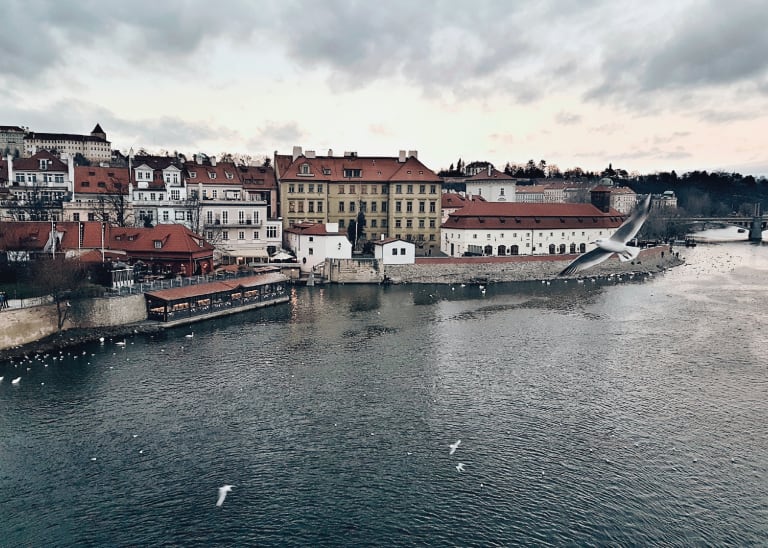
Let's not kid ourselves: winter in Prague is cold and often reaches negative temperatures. However, many tourists choose to visit Prague at this time of year in the hope of seeing it covered in snow. In addition, the Christmas markets are an irresistible attraction and I can assure you that it is well worth bundling up a little warmer to enjoy the magical atmosphere of winter. If you want to know more about this, I recommend you read the post 10 things to see and do in Prague at Christmas
With the arrival of the cold weather, you can dedicate yourself to tasting traditional Czech dishes. Goulash, svíčková (beef stew with dumplings) and pork knuckle are just some of the delicacies you can try in the city's restaurants. Perhaps accompanied by a glass of Moravian red wine. The post on Czech gastronomy will give you some interesting ideas.
What to do in Prague in winter?
- If you visit Prague in December or until 6 January, you will see the typical Christmas markets. The main one is in the central Old Town Square, but it's not the only one. There are also stalls near the castle and on Wenceslas Square. Take the opportunity to stroll around leisurely and warm up with some mulled wine and a trdlo, a sweet sugar-coated pastry.
- St . Nicholas (Mikuláš) is on 6 December. In the evening, the saint accompanied by an angel and a devil arrive at the Old Town Square followed by the children. St. Nicholas asks them if they have been good during the year, the children answer yes and recite a short poem. At the end, they are rewarded with a small gift or a sweet.
- The Christmas markets are complemented by an attraction that your children will love: small stables with sheep, goats and donkeys. Again, the most beautiful one is located in the Old Town Square. If you are travelling with your children, I recommend you read the post 10 things to do and see in Prague with kids.
- In December, some churches and concert halls in the Old Town host classical music concerts.
- On 1 January, the Czech capital used to celebrate the arrival of the New Year with fireworks. Unfortunately, the firecrackers disturbed the birds, which is why they have been replaced by videomapping, a visual technique that consists of projecting images onto real surfaces (ceilings, walls, domes, etc.) generating motion or 3D effects. For more information, see the article 10 things to see in Prague in January.
- Last but not least, we couldn't miss a winter classic: ice skating. In Prague, the rinks are located in Ovocný trh (Old Town) and under the Žižkov TV Tower. In both cases, you can rent equipment on site.
Do you love winter sports? The Czech Republic has beautiful mountains that turn white every year. Two hours (or less) from the capital, there are winter resorts that attract thousands of tourists every year. The main ones are Moninec (in the south), Jested and Špindlerův Mlýn (in the north). A more relaxing alternative is a sauna to eliminate toxins and restore energy. The most picturesque one is called Lázně na Lodi and its special feature is that it is located on a ship anchored on the banks of the Vltava (Rašínovo nábř. 120).
